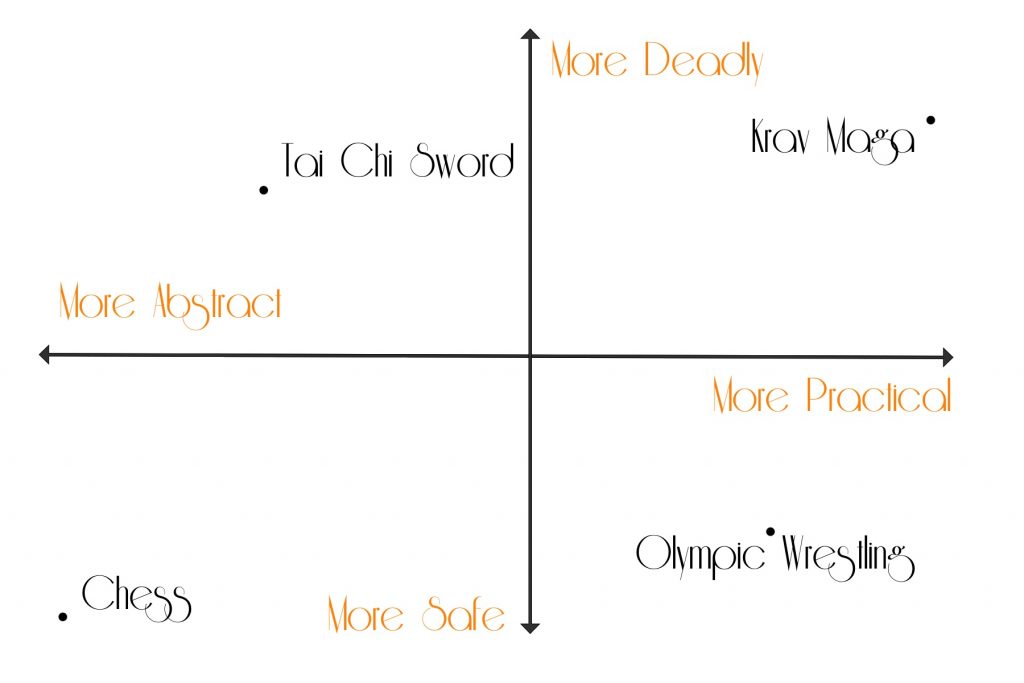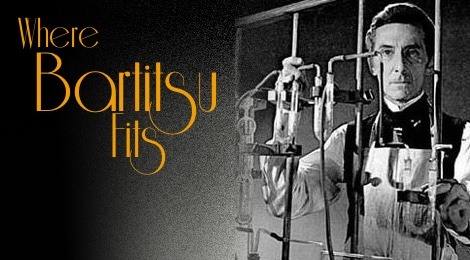In speaking generally about kinds of martial arts and how to compare Bartitsu to other more familiar systems, sometimes we have to clarify our terms and classifications. One way to think about combat practice is to consider where the philosophy that underpins its rules and methods fits on a spectrum.
Abstraction vs. Pragmatism
One spectrum we might consider is the degree of abstraction.
The abstraction metric might span:
- from purely symbolic
- to the indicative
- to the practiced precise motion
- to the purely practical.
A purely symbolic art would be difficult to apply to real combat at all. I think of military-inspired board games like chess as being at this end of the spectrum.
On the other hand, a purely practical combat form would eliminate all formalities, and focus only on those body motions that will most effectively win a physical confrontation.
Safety vs. Deadliness
The physical danger spectrum might go:
- from not at all
- to accidental minor injuries
- to intentional infliction of minor injuries
- to intentional infliction of major injuries and death.
We should acknowledge that even within a martial art, different levels of lethality may be practiced. Punching the air is never dangerous, punching in pre-set patterns with a partner blocking every strike will only rarely meet a minor injury. Punching in sparring may intentionally cause bruising or even a cracked rib. And deliberately punching for the throat can be very dangerous, but part of your combat training. Which level best describes your martial art? You might debate that.
Even when it comes to chess, which I would say is not only abstract but safe because both fighters cannot be harmed, is it perhaps that these knights are imagined to be killed? It’s pretty lethal for the pieces!
Infographic It!
On a graph, one axis is formalism or abstraction, while the other axis is physical deadly effectiveness. With a few examples included, I think a graph might look like this:

So the question is: Where does your Bartitsu practice fit on this graph?
The more one focuses on the historical forms and repeating set patterns, the more one moves toward abstraction. Therefore, at Academie Duello, we believe that the heart of Bartitsu is pragmatism. We use what works, which is what Barton-Wright intended.
We are also peacefully-minded citizens, not soldiers, so we’d like to end the violence without deadly force. We also prefer to stay away from the deadly end so that while practicing, we can avoid injuries of our training partners.
